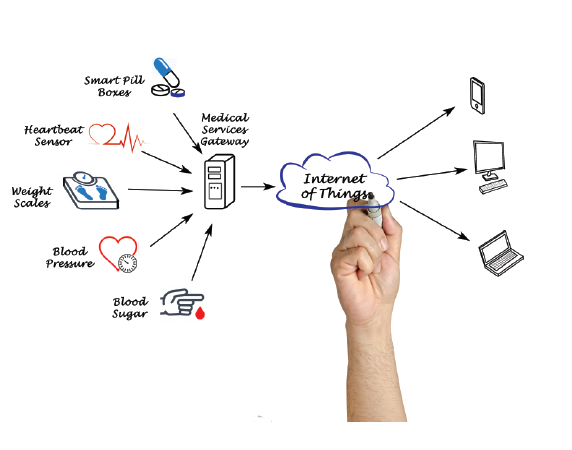Healthcare – Gearing up For the Internet of Things
What better place than Hollywood to see some “futuristic technology” in action, right? I’m talking about the hit science fiction series by James Cameron, “Terminator”! How many of you remember “Skynet”, the global intelligence machine that set out to destroy all of mankind in Terminator?
I’m sure none of you would have missed watching that evil machine with sensors everywhere, sending out terminators on its quest to destroy humankind.
The fact to be noted here is not that Skynet is an evil machine, but the level of technological advancement brought into light. We are more interested in the rich, sensor-driven network portrayed in the movie and what it could do. The Internet of Things (IoT)! Something that we’ve all been hearing about for quite some time now.
Now imagine having that kind of a network in our healthcare industry. The one industry that we all rely on, for our well being at all times in life. Imagine having that kind of sync and connectivity among all devices and people in a healthcare organization! We‘re talking about the Internet of Things working to save the lives of millions of people.
According to a report released last year by Swiss research firm, Soreon Research, by 2020 connected wearable devices alone could be able to save an estimated 1.3 million lives. Another report from MarketResearch.com says that by 2020, the IoT market value in healthcare will be close to $117 billion.
As exciting as that sounds, it is also likely to bring with it a huge revolution for the industry. And the good news is that, it’s here finally and it’s here to stay. Revolution is just around the corner and it’s time for healthcare organizations to gear up to facilitate the change.
Advocates of IoT say that it will make treatments much smarter and better suited to the needs of each individual patient and will also eliminate medical errors. It is also expected to change the way that severe and costly conditions, like heart diseases and diabetes are treated.
Now the real question is, how should healthcare organizations prepare and plan for such technology oriented future? Especially when concerns related to cybersecurity still remain.
Bill Betten, Principal at Sysgineering Solutions, who has also worked for firms like Nonin Medical, Logic PD and 3 PM says, “ One should definitely take advantage of the connectivity by building it in; it is hard to add it in after the fact. But I would encourage device companies to have a conversation around the strategy for incorporating into the future product offering.”
According to Betten, there are some things that could help organizations prepare for the future.
- Looking back – According to Betten, a historical perspective can go a long way. He says, “I would argue that a lot of medical connectivity started in the late 80s and 90s. Looking back to this time period can give useful perspective in understanding what is happening in with IoT in healthcare.”
Back then there was always the urge to digitize radiology-based imaging, but there were obviously technological and standard based obstructions for it. But in the later 90s, there were several manufacturers that came up with several methods for the same purpose and in 1997, the New York Times finally declared that digital x-ray systems were beginning to replace film-based x-rays. This was because of the DICOM standard, which evolved from the ACR/NEMA 300 standard finalized in 1985. Before the standard, all radiology images used to be disconnected. But with DICOM, images could be shared worldwide, they could be duplicated and machines from different manufactures could communicate. Other devices, such as blood pressure cuffs and oximeters, have also been advanced because of such support from the standards.
Hence, Betten says that the first lesson of the IoT is interoperability. - Value proposition – Betten feels that there is definitely a need to study the value proposition of integrating IoT into medical devices and also the entire IoT healthcare landscape, to understand how much money is being spent on using the technology for different applications. There is a need to determine the exact utility of using the technology and not just the benefits.
Although there is a lack of sufficient data supporting this fact, the most money is likely to be spent on taking care of the chronically ill. Forbes in January of 2013 had stated that 5% of the sick population is responsible for 50% health care costs. Betten feels that utilizing the IoT to bring down these figures and make the treatment of chronic diseases much more effective and efficient could be a possible investment. - Questions – As with any technology, there may be a dozen promises on the benefits of using it, but there is a need to consider the physical, social, economic and political environments as well before going ahead. When EMRs came, they had the promise of an annual savings of $81 billion annually, but in reality, they actually failed to bring down the healthcare costs. It was not a technological problem though.
Any technology like the IoT, as well as, the EMR may have great potential, but the fact remains that they may not be able to deliver the said promises because of other factors like the ones mentioned above.
The strategy needs to be thought out well and hard before deploying any solutions, considering all possible factors that can influence productivity and efficiency.
Security concerns also need to be addressed, as these days, along with the growth of technology is also the growth of ways to break in. Financial institutions are looking for advanced ways to protect the customer’s money and so are hackers for utilizing identity theft to steal important data. Medical-related data always forms a huge part of such important confidential information as they can lead to Social Security Numbers and the like. Hence, it is extremely important to use high level security features with IoT.
“For the IoT to be meaningful, you need interoperability, security and a reason for putting it together. And a knack at coming up with good answers to tough questions.”-
Betten
Stay up to date on what's new

Recommended Posts
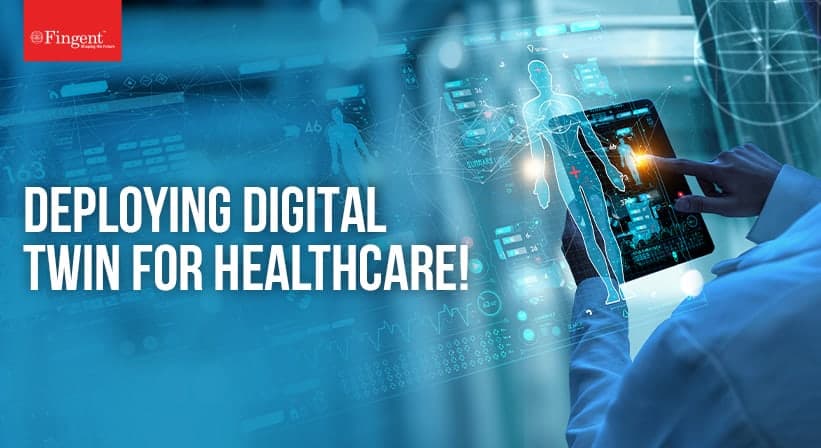
16 Feb 2022 Healthcare
Is Digital Twin Promising A New Era for Healthcare?
Over the next three years, 66% of healthcare executives are planning to increase their investment in digital twin, states a recent digital health technology report. Since the outbreak of the……
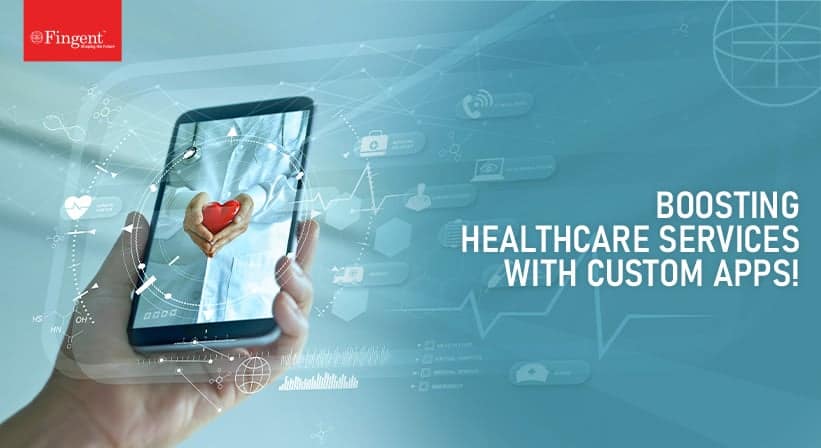
10 Feb 2022 Healthcare B2B
How Can Custom-Made Software Provide Superior Customer Service In The Healthcare Industry?
Healthcare is a vast customer service industry that is trying to improve patient health and healthcare processes. This patient-centric approach has evolved, especially after the COVID-19 pandemic. Virtual consultations and……
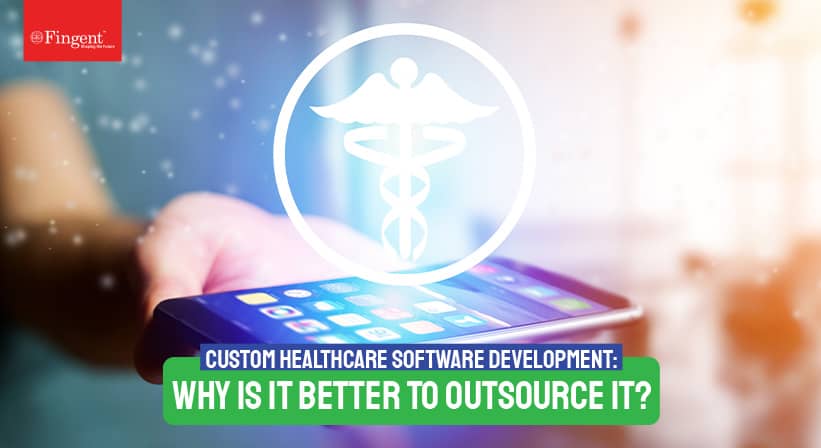
13 Oct 2021
Custom Healthcare Software Development: Why Is It Better To Outsource It?
With the ongoing COVID-19 pandemic, the healthcare industry is spiraling at an unexpected speed and is continuously inventing healthcare solutions to drive streamlined operations. Medical organizations are now largely depending……
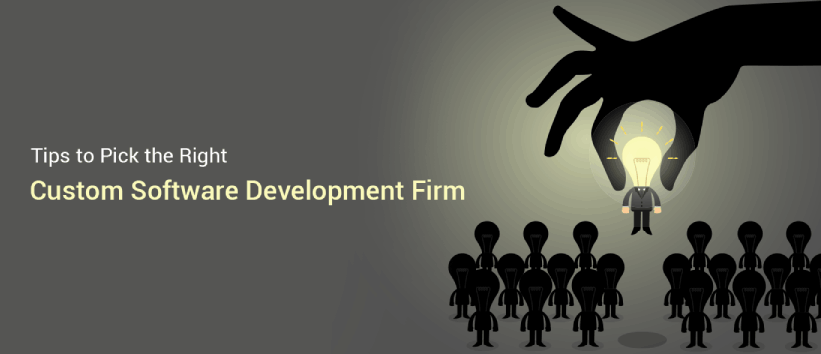
13 Aug 2021 Healthcare
5 Healthcare Digitalization Trends Crucial In 2021 And Beyond
Top Healthcare Digitalization Trends To Look For In The New Normal Healthcare digitalization is reshaping the way we interact with healthcare professionals, share medical data or make decisions related to……
Featured Blogs
Stay up to date on
what's new



